September 27, 2024
The very first buildings in Bergen were at Bryggen, a vibrant and important area of the city for many centuries. It is also a highly visited and photographed area.
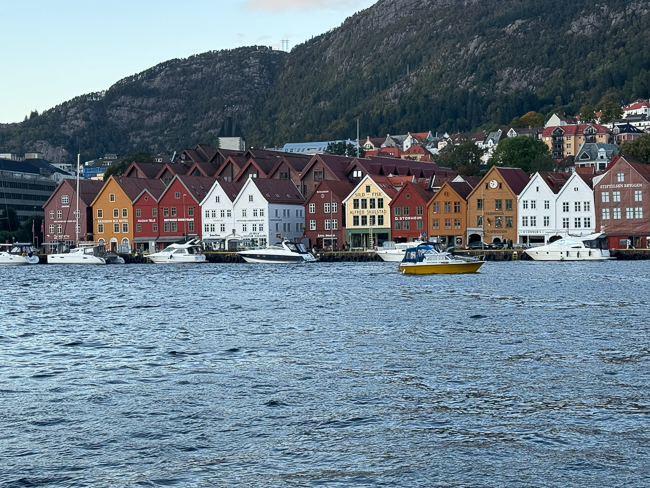
Thanks to wooden houses, Bergen, including the neighborhood of Bryggen, burned down several times throughout history. There are 61 buildings in Bryggen, and 25% of them are from 1702, the last time Bryggen was burnt down in its entirety.
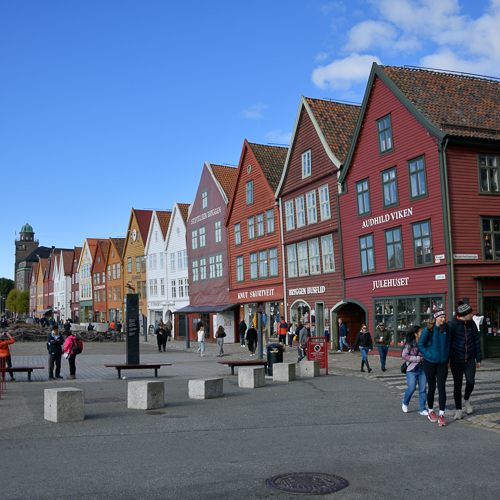 *
*
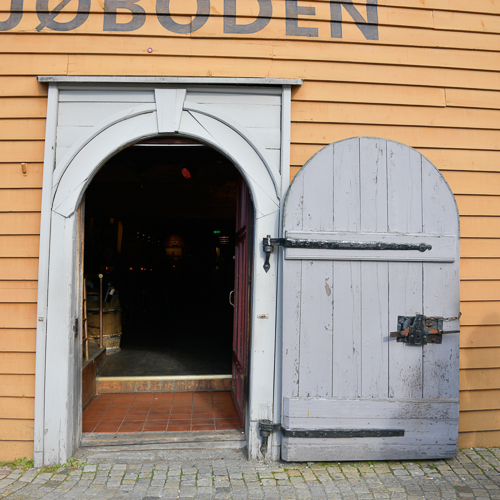
Bergen is one of North Europe’s oldest port cities on the west coast of Norway. It was established as a center for trade in the 12th century. In 1350, the Hanseatic League established a “Hanseatic Office” in Bergen. They gradually acquired ownership of Bryggen and controlled the trade in stockfish from Northern Norway through privileges granted by the Crown. The Hanseatic League established four overseas Hanseatic Offices, Bryggen being the only one preserved today.
The word Hanse means ‘convoy’. This word refers to the groups of merchants traveling between the Hanseatic towns by land or sea.
The Hanseatic League’s common goal was to dominate trade, protect economic interests, gain diplomatic privileges, and establish trading routes.
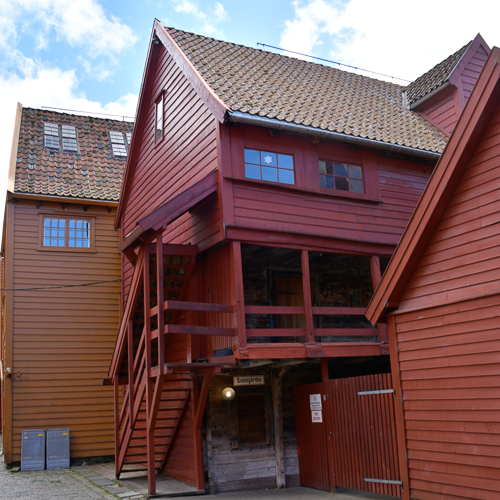
The original compact medieval urban structure of Bryggen is preserved with its long, narrow rows of buildings facing the harbor, separated by narrow wooden passages. At the time, Bryggen was basically a colony of bachelor German merchants.
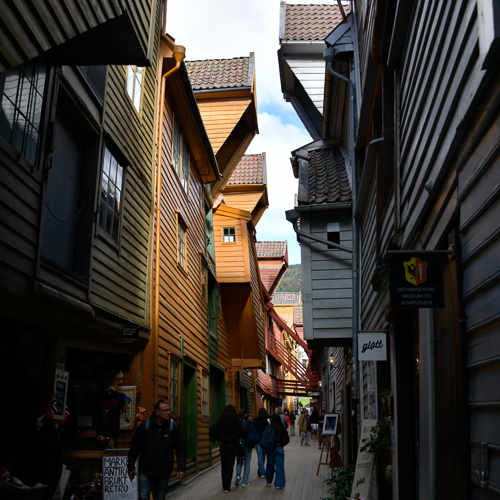
The residential areas lie on either one or both sides of the narrow passages, which function as private courtyards.
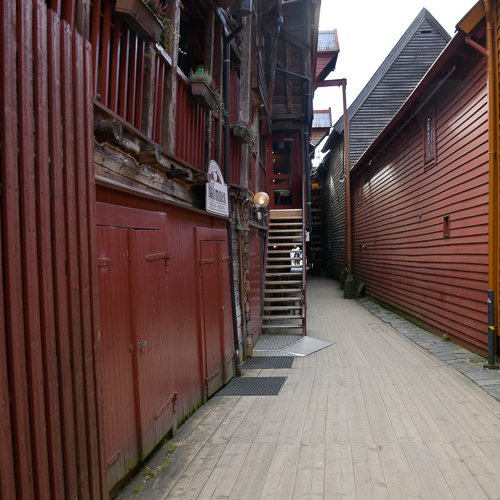 *
*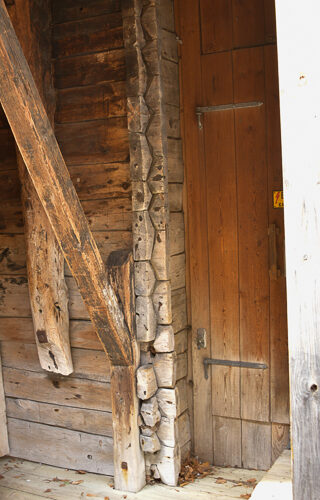
The houses are built using a combination of traditional timber log construction and galleries with column and beam construction and horizontal wooden panel cladding.
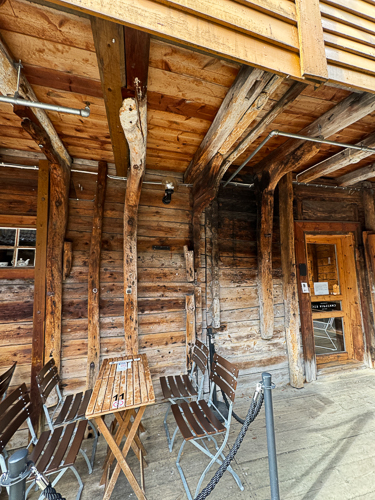
*
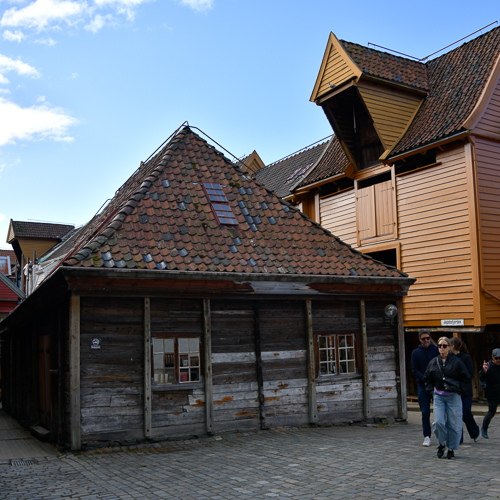 *
*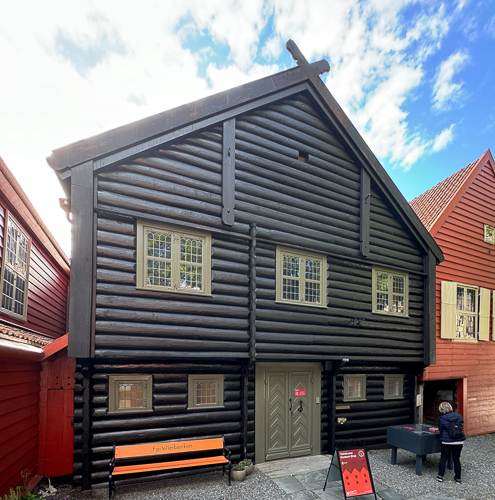
Rows of two- to three-story buildings were signified by the medieval name “gård”.
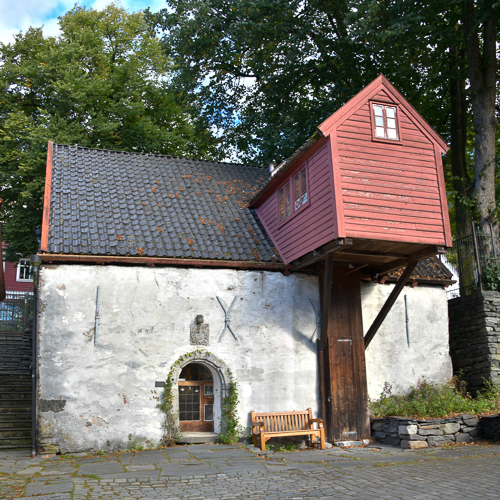
Towards the back of the gård are small fireproof warehouses or storerooms (kjellere) built of stone to protect special goods and valuables against fire.
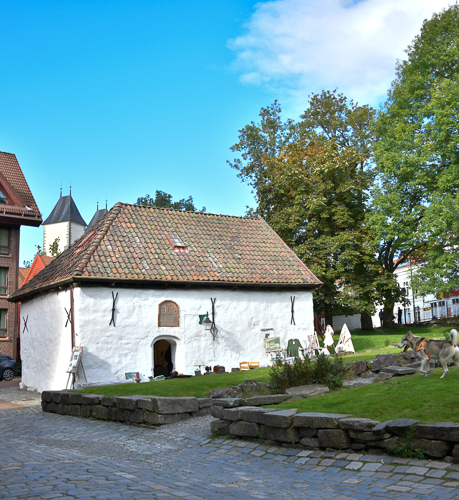
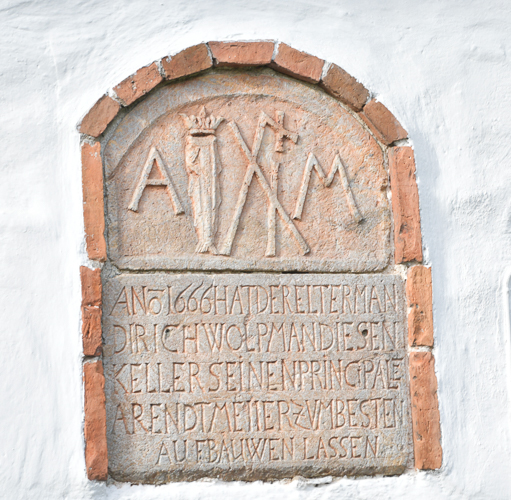
The sign over the door reads: “In 1666, the elder Dirich Wolpman had his principal Arendt Meiier build this cellar for the best.”
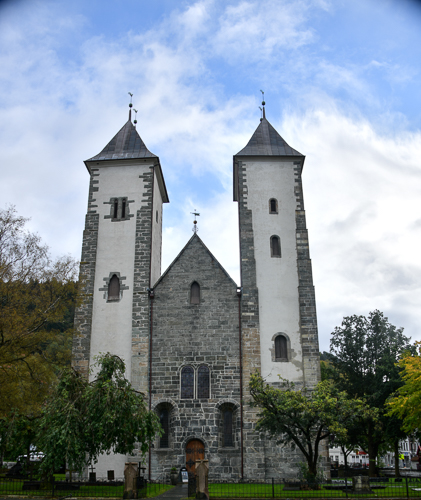
St Mary’s Church
St. Mary’s Church is the only remaining of the twelve churches and three monasteries built in Bergen between the reign of Olav Kyrre (1066–1093, traditionally 1070) and the end of the twelfth century. The church’s construction is believed to have started in the 1130s or 1140s and was completed around 1180, making this church the oldest remaining building in Bergen. There have been a few fires that burned the church, as well as several renovations and reconstructions, most recently in 2013.
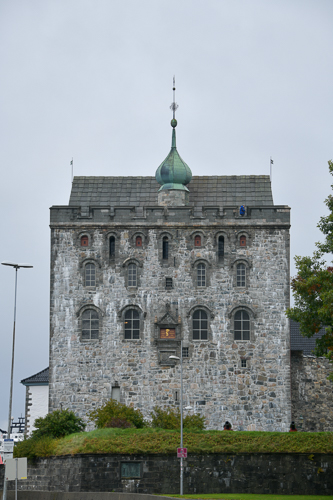
Rosenkrantz Tower
Rosenkrantz Tower is regarded as the most important Renaissance monument in Norway. In the 13th century, it was the residence of one of Norway’s most significant kings, Magnus the Lawmender. Parts of the tower are from the 1270s and were built by Mangus the Lawmender Håkonsson, but it has been extended several times for fortification and offices for the governors of Bergen. In the 16th century, it became the governor´s castle.
There is an earnest historic preservation movement within Bryggen.
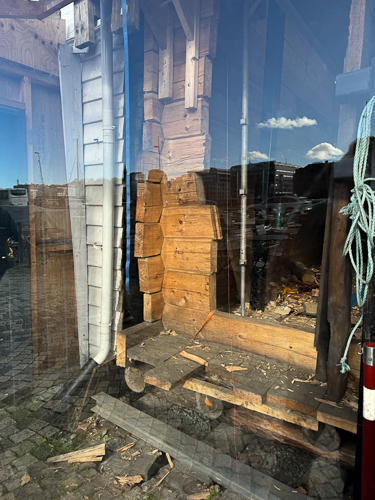
Here, the restoration is going on behind glass so people like me can ogle. These two buildings were rebuilt as three-story warehouses with lofts after the great city fire of 1702. Both buildings were originally built as “stuer*” with an office and living quarters for the merchant and his workers. The buildings are built on log rafts on the ground, called bulwarks, which are foundations consisting of several layers of cross-laid beams placed on deep layers of soil.
Rot heavily damaged the foundations, which is the main reason the buildings at Bryggen need to be restored.
The restoration began in March 2021. To enable excavation, the buildings were jacked up using a lifting rig.
*The literal translation of Stuer is the living room; what its context was in 1702, I do not know.
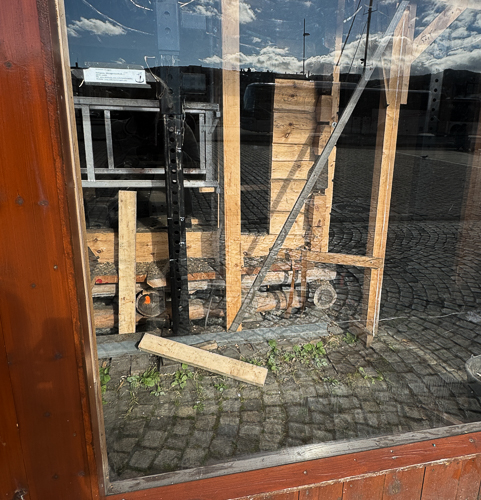
In 1979, Bryggen was listed on the UNESCO World Heritage List with this explanation: Bryggen bears the traces of social organization and illustrates the use of space in a quarter of Hanseatic merchants that dates back to the 14th century. It is a type of northern “fondaco”, unequaled in the world, where the structures have remained within the cityscape and perpetuate the memory of one of the oldest large trading ports of Northern Europe.
“The Bryggen Project” was established in 2000. This is an extensive and long-term project for monitoring, safeguarding and restoring Bryggen, including both archaeological deposits and standing buildings.
